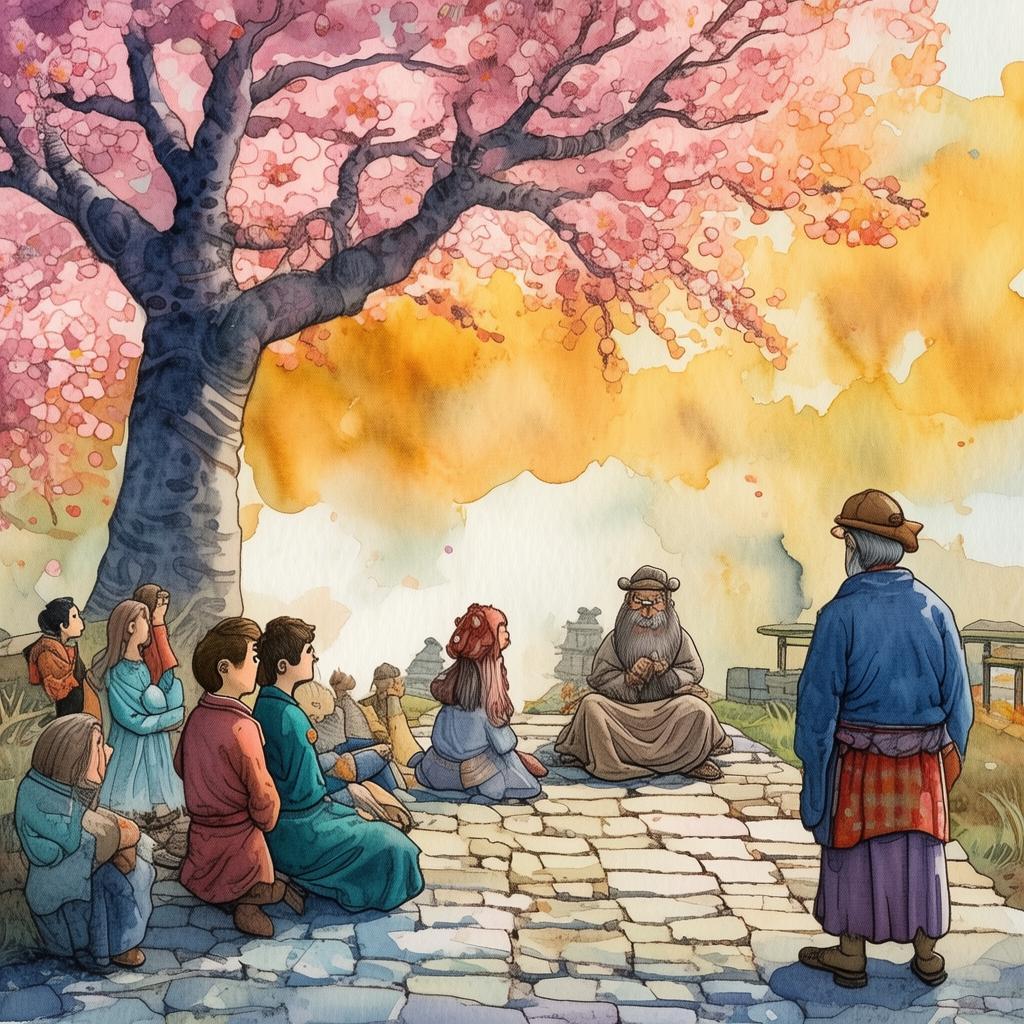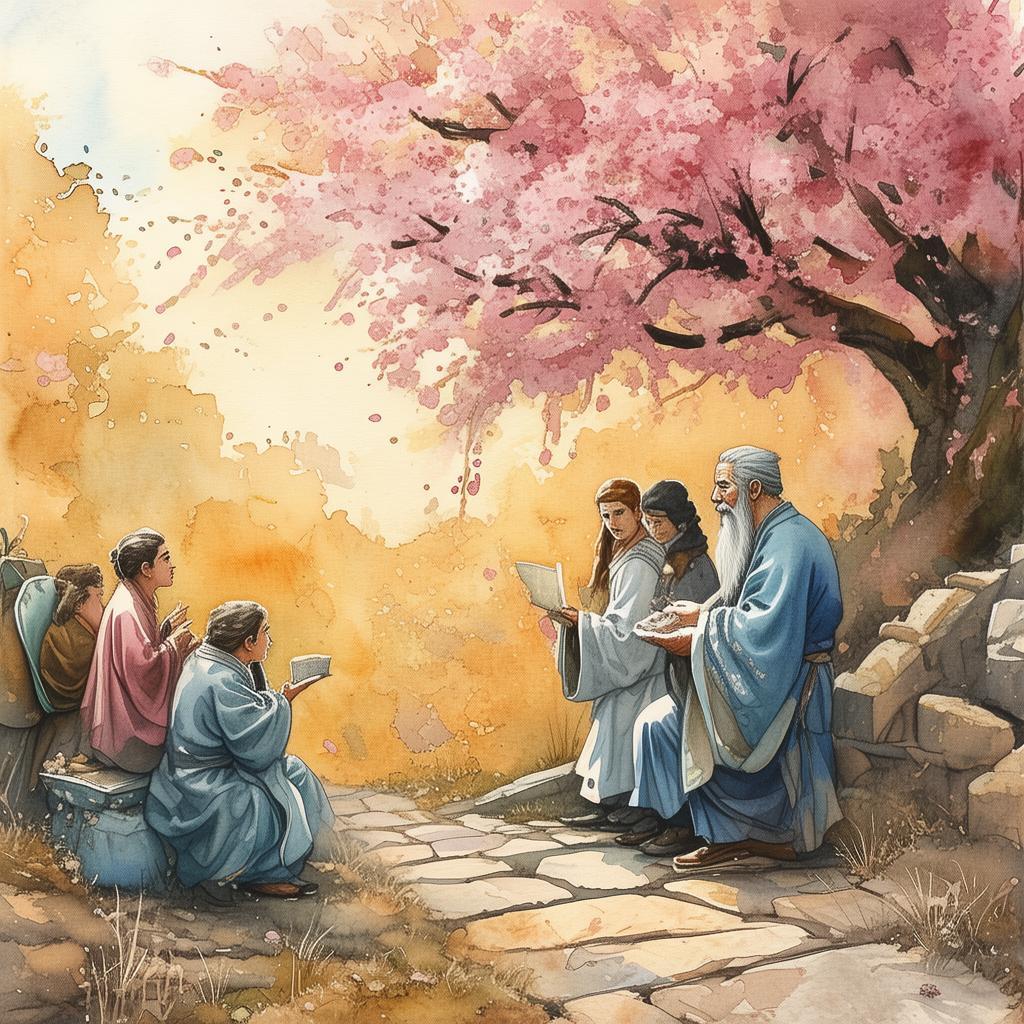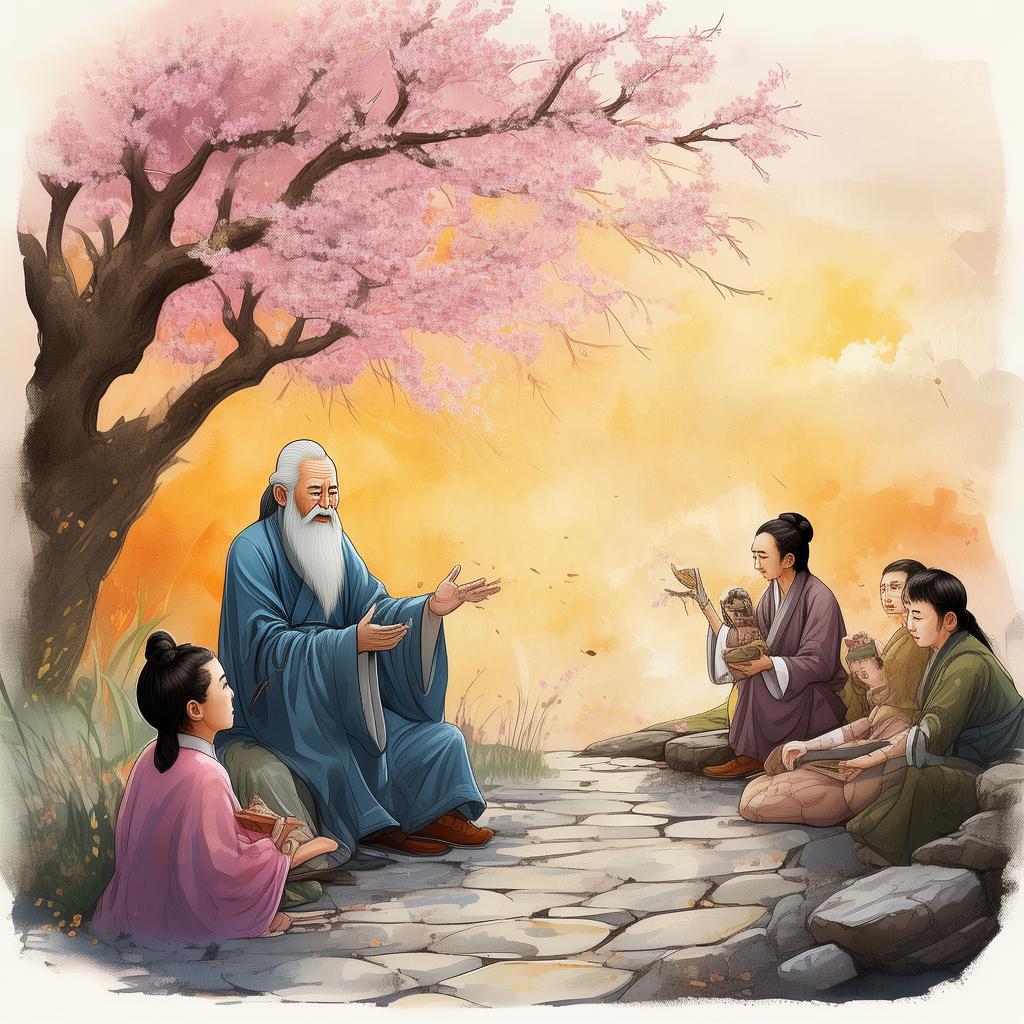The Vanishing Masterpiece: A Tale of Betrayal and Belief
In the bustling city of Jingzhu, where the scent of tea and the sound of classical music mingled with the hustle and bustle of daily life, there lived an artist known far and wide as the Vanishing Master, or "Wu Qianli." His paintings were legendary, each a tapestry of colors and emotions that seemed to dance off the canvas, alive with their own stories. His latest work, "The Fading Canvas," was a portrait of a woman whose eyes held the secrets of the universe, and whose smile was said to be as captivating as the stars in the night sky.
The opening of Wu Qianli's latest exhibition was a sensation. Art enthusiasts, collectors, and journalists alike descended upon the gallery, eager to catch a glimpse of the enigmatic masterpiece. The gallery was filled with whispers and murmurs as the crowd gazed upon the painting, its presence felt more than seen.
One evening, as the gallery was closing, a young man named Liang, a protégé of Wu Qianli, discovered the painting had vanished. Panic set in as he reported the theft to the authorities. The police were baffled; there were no signs of forced entry, and the painting had simply disappeared from its frame.
The story of the missing masterpiece quickly spread like wildfire. The Vanishing Master's reputation was at stake, and the public demanded answers. Wu Qianli, known for his reclusive nature, was the prime suspect. His past was shrouded in mystery, and whispers of a personal tragedy that drove him from the public eye were a constant rumble in the art world.
As the investigation deepened, a series of clues began to emerge. The painting had been seen in the hands of a mysterious figure who had been lurking around the gallery for days. The figure's face was obscured, but their eyes seemed to burn with a passion that was as consuming as the flames of a burning canvas.
Determined to uncover the truth, Liang delved into Wu Qianli's past. He discovered that the artist had once had a close friendship with a fellow painter, Feng, who had since disappeared under equally mysterious circumstances. Liang's investigation led him to a small, secluded village where Wu Qianli had once lived.
In the village, Liang found a series of letters between Wu Qianli and Feng, detailing a falling out that had driven Feng to the edge of sanity. The letters revealed that Feng had discovered a hidden truth about the origin of "The Fading Canvas" that could destroy Wu Qianli's reputation. In a fit of jealousy and desperation, Feng had stolen the painting and vanished.
Determined to save his mentor's honor, Liang set out to find Feng. His journey led him through the winding roads of the countryside, past ancient temples, and through dense forests. Along the way, he encountered a series of obstacles, including a group of art thieves who were also after the painting.

Finally, Liang tracked down Feng in an abandoned workshop. The man was a shadow of his former self, his eyes hollowed by years of solitude and despair. Liang confronted Feng with the truth, and in a moment of clarity, Feng confessed his actions. He had stolen the painting to prevent Wu Qianli from revealing the truth about the woman in the painting, who was in fact his own long-lost sister.
Feng, realizing the weight of his actions, handed over the painting to Liang. Wu Qianli, upon learning the truth, forgave Feng and welcomed him back into the fold. The painting was returned to the gallery, and the truth was finally revealed to the public.
The story of the vanishing masterpiece became a testament to the power of belief and redemption. Wu Qianli's reputation was restored, and the art world celebrated the return of the Vanishing Master. The painting, now known as "The Fading Canvas: A Story of Belief," hung in the gallery, a beacon of hope and the enduring legacy of an artist whose art was not just a canvas of colors, but a canvas of life itself.
In the end, Liang's unwavering belief in Wu Qianli's innocence and the truth behind the painting's vanishing served as a reminder that sometimes, the most precious treasures are not found in gold or jewels, but in the hearts of those who hold onto hope and belief.
✨ Original Statement ✨
All articles published on this website (including but not limited to text, images, videos, and other content) are original or authorized for reposting and are protected by relevant laws. Without the explicit written permission of this website, no individual or organization may copy, modify, repost, or use the content for commercial purposes.
If you need to quote or cooperate, please contact this site for authorization. We reserve the right to pursue legal responsibility for any unauthorized use.
Hereby declared.









